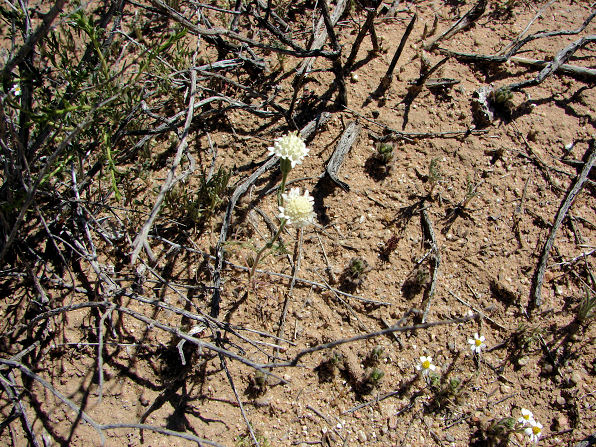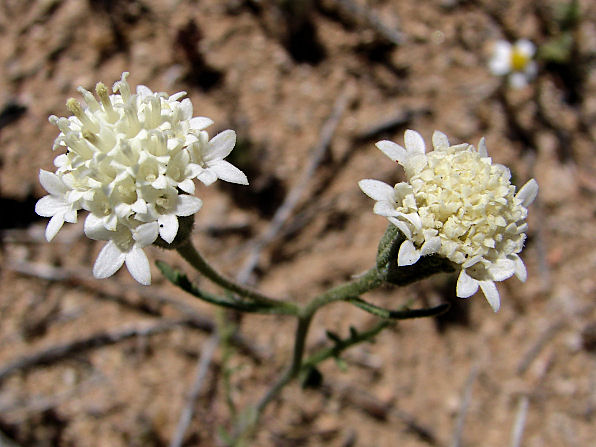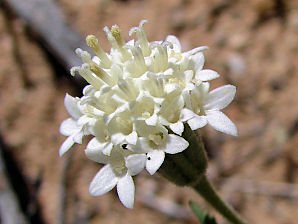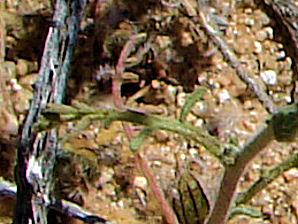Arizona Wild Flowers
Pictures, Photos, Images
Descriptions, Information, Reviews.
Esteve's Pincushion Flower, Chaenactis stevioides.
We Are Proud Of Our SafeSurf Rating!
Click On Any Of The Following Links By Amazon.Com
For Books, & Videos About Wildflowers Of Arizona & The Southwest USA. No Obligation!
 |
| Esteve's Pincushion Flower, Chaenactis stevioides. Also called Steve's Dustymaiden. Plant Photo Taken March 21, 2009 Alamo Lake, Arizona. |
|---|
 |
| Esteve's Pincushion Flower, Chaenactis stevioides. Also called Steve's Dustymaiden. Flowers Photo Taken March 21, 2009 Alamo Lake, Arizona. |
 |  |
| Esteve's Pincushion Flower. Chaenactis stevioides. | Steve's Dustymaiden Leaf. Chaenactis stevioides. |
|---|
Esteve's Pincushion Flower.
We wish to thank Wikipedia, the free encyclopedia for some of the information on this page. We share images and information with Wikipedia. Chaenactis stevioides is an annual herb, with hairy leaves and stems, each with a solitary flower head containing narrow, white, or pinkish rays; native to the Great Basin of the United States, and the southwestern deserts, extending into Mexico. Its inflorescence bears several flower heads on a tall peduncle. Each flower head is lined with rigid, hairy and glandular phyllaries and filled with white, to pinkish flowers. The flowers around the edges are larger and open-faced, and the ones in the center of the head are smaller and somewhat tubular in shape. The fruit is an achene with a pappus of scales. Native to the Great Basin of the United States and the southwestern deserts, extending into Mexico; most abundant spring wildflowers are in the higher Mojave Desert, and southern Great Basin.
Quick Notes:
Height: Up to about 12 inches. Spreading out to about 16 inches wide.
Flowers: The flower heads are discoid, about 3/4 to 1 inch in size, made up of many individual flowers (a composite), and white, cream white, sometimes pinkish in color.
Flowering Time: Mid March - May.
Fruit: Achene � 1 seeded with a hard shell.
Leaves: 1�2-pinnate with 4-8 main lobe pairs. Finely divided to 2" long. The leaves and stems are covered with hairs.
Found: Native to the USA (AZ, CA, CO, ID, NM, NV, NY, OR, UT, WY). Also found in Northern Mexico in northern Sonora, Baja Norte, & Baja California.
Hardiness:
Soil pH requirements:
Sun Exposure:
Elevation: 0 to 4,000 Feet.
Habitat: In desert shrub, and pinyon-juniper communities. On sandy and gravelly areas or hillsides.
Miscellaneous: Plant & Flowering Photos Taken March 21, 2009. Alamo Lake, Arizona.
|
We Are Proud Of Our SafeSurf Rating!
Click On Any Of The Following Links By Amazon.Com
For Books, & Videos About Wildflowers Of Arizona & The Southwest USA. No Obligation!
| © 1966 - Present, Audrey, Eve, & George DeLange |